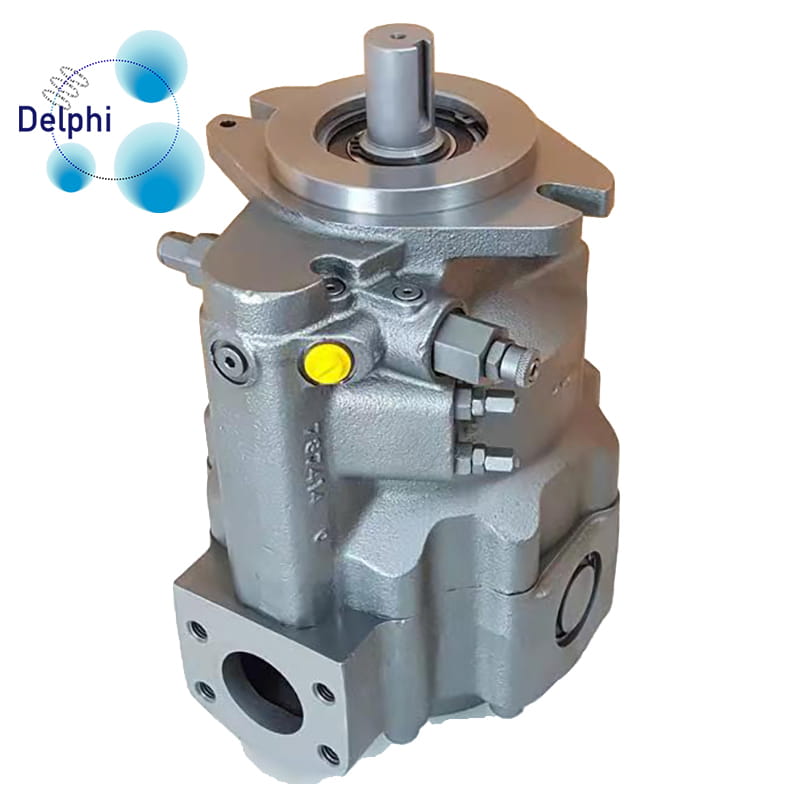The F11 Series Motor, manufactured by Parker Hannifin, is a type of hydraulic motor known for its high efficiency, compact design, and reliability. In marine applications, F11 Series Motors are utilized in various ways due to their robust construction and performance characteristics.
Here are some common uses:
- Propulsion Systems: F11 Series Motors can be employed in marine propulsion systems to drive propulsion shafts, propellers, or water jets. These motors provide the torque and power necessary to propel vessels through water efficiently, contributing to smooth and reliable operation.
- Winches and Windlasses: F11 Series Motors are well-suited for powering winches and windlasses on boats and ships. These motors deliver high torque output, allowing winches to hoist heavy loads, such as anchor chains or fishing nets, with ease. China F11 Series Motor suppliers Their compact design makes them ideal for installations where space is limited.
- Steering Systems: Hydraulic steering systems in marine applications often utilize F11 Series Motors to provide power assistance for steering mechanisms. These motors help turn rudders or steering wheels, allowing for precise and responsive control of the vessel, even in challenging sea conditions.
- Deck Machinery: F11 Series Motors can be integrated into various deck machinery, such as cranes, davits, and lifts, to facilitate cargo handling, launching, and recovery operations. Their high power-to-weight ratio and durability make them suitable for demanding marine environments.
- Thrusters: F11 Series Motors are used in thruster systems to provide auxiliary propulsion and maneuvering capabilities for ships and boats. These motors drive azimuth thrusters, tunnel thrusters, or pod thrusters, enabling vessels to navigate safely in harbors, docks, and tight quarters.
- Dredging Equipment: In dredging applications, F11 Series Motors can power hydraulic pumps and winches used in dredgers and dredging vessels. These motors provide the torque and power necessary to excavate sediments, load dredged material, and operate suction or cutter heads.
- Hydraulic Power Units (HPUs): F11 Series Motors are often integrated into hydraulic power units onboard marine vessels. These HPUs supply hydraulic power for various auxiliary systems, including deck machinery, steering systems, stabilizers, and thrusters, ensuring reliable operation of critical equipment.
- Dynamic Positioning Systems (DPS): Some advanced marine vessels, such as offshore support vessels and research vessels, utilize dynamic positioning systems for precise station-keeping and maneuvering. F11 Series Motors can be part of the hydraulic systems that control thrusters and propulsion units to maintain vessel position and heading, even in adverse weather conditions or strong currents.
Overall, F11 Series Motors play a vital role in marine applications by providing reliable and efficient hydraulic power for propulsion, steering, winching, lifting, thruster operation, and other critical functions essential for safe and efficient vessel operation. Their versatility, durability, and performance characteristics make them well-suited for the demanding conditions encountered in marine environments.
What role do PV Series Pump play in hydraulic fluid power transmission?
The PV Series Pump, manufactured by Parker Hannifin, is a type of variable displacement axial piston pump commonly used in hydraulic fluid power transmission systems. Here’s how the PV Series Pump plays a crucial role in hydraulic power transmission:
- Fluid Power Generation: PV Series Pumps are primary components in hydraulic power transmission systems, China PV Series Pump manufacturer responsible for generating the pressurized fluid required to actuate hydraulic actuators, motors, and other hydraulic components.
- Variable Displacement: One of the key features of PV Series Pumps is their variable displacement capability. Operators can adjust the displacement of the pump to control the flow rate and pressure of the hydraulic fluid, allowing for precise control over the operation of hydraulic systems.
- Flow Regulation: PV Series Pumps regulate the flow of hydraulic fluid within the system. By varying the displacement of the pump, operators can adjust the flow rate to match the requirements of the hydraulic actuators and other components, ensuring optimal performance and efficiency.
- Pressure Regulation: PV Series Pumps play a role in maintaining the desired pressure levels within a hydraulic system. By adjusting the displacement of the pump, operators can regulate the pressure of the hydraulic fluid to prevent overpressure conditions and ensure safe and reliable operation of the system.
- Directional Control: PV Series Pumps enable directional control of hydraulic fluid within the system, allowing operators to control the direction of movement of hydraulic actuators and motors. By reversing the direction of fluid flow, PV Series Pumps can change the direction of motion of hydraulic cylinders or motors, enabling precise control over mechanical motion.
- Load Sensing: Some PV Series Pumps are equipped with load-sensing capabilities, allowing them to adjust their displacement based on the load requirements of the hydraulic system. This feature optimizes energy efficiency by delivering the required flow and pressure only when needed, China PV Series Pump manufacturer reducing energy consumption and heat generation.
- System Efficiency: The efficiency of hydraulic power transmission systems depends in part on the performance of the PV Series Pump. These pumps are designed to operate efficiently, minimizing energy losses and maximizing the conversion of mechanical power into hydraulic power, thereby optimizing the overall efficiency of the system.
- Compatibility: PV Series Pumps are compatible with a wide range of hydraulic fluids, including mineral oil, synthetic fluids, and environmentally-friendly options. This compatibility allows them to be used in various hydraulic applications across different industries, providing versatility and flexibility in system design.
Overall, PV Series Pumps play a critical role in hydraulic fluid power transmission by generating pressurized fluid, regulating flow and pressure, controlling direction, and optimizing system efficiency. Their variable displacement capability and other features make them essential components in a wide range of hydraulic systems, from industrial machinery to mobile equipment.
